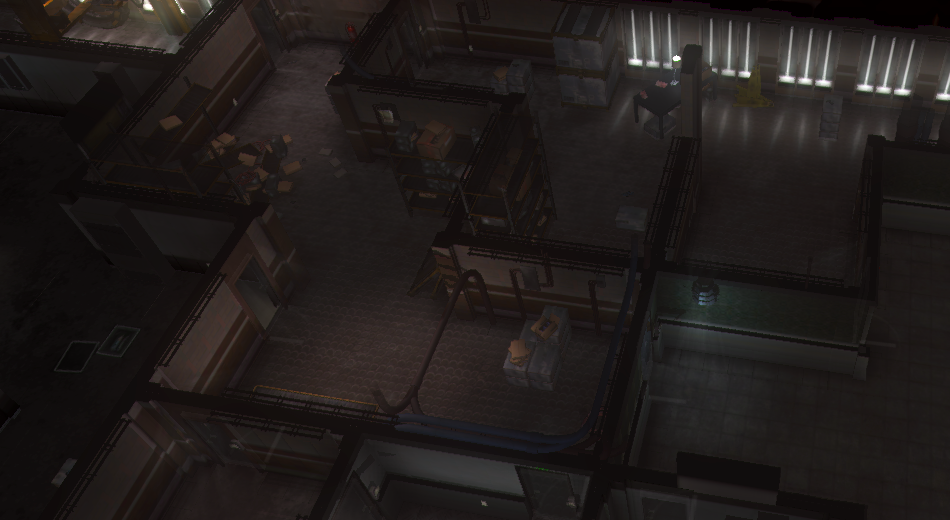A place to put your stuff
Procedural generation in Pathos
It’s not exactly easy to tell a computer to decorate a room; in fact there’s a lot of unconscious stuff going on when you put stuff in your own room (not even considering the tastes of your friends and family who will either declare your stuff wonderful or frowningly wonder at your fancy choice of second-hand antique stuff scavenged from the streets).
There are some other games trying to build random environments using different approaches. Diablo 3 for example uses big pre-designed blocks for its outside environments, Valve built an experimental tile-procedural generation is becoming one of the most interesting research fields in programming and game design based level generator called Tilegen for Alien Swarm. In fact, along with animation technology it’s slowly becoming one of the most interesting research fields in programming and game design. Even some armies are interested in its use of decorating towns and interiors for simulations.
Procedural generation as it’s called is hard to do right, but at that very point it will be incredibly rewarding both in terms of financial and time constraints. The most difficult thing about that point is to know when to design something and when to generate it. This distinction is something that could probably lead a lot of designers to pick up some programming skills. If you are generating a room, are you going to make a computer put the dishes on a table or is this really the responsibility of a designer?
The way we’ve been thinking about this is in narrative terms; if the table has a small plate with a bunch of little green peas, small cutlery and a high chair, you can bet there’s a kid in the house. If you see a dumbwaiter in the middle of the table with tons of different small bowls, we’re definitely not in the Netherlands. So all these visual elements are not simply ‘decorative’, they are interpreted by a viewer as a narrative choice. This very choice is the qualitative difference between why random generation can often be worse than something created by a designer; a good designer distills narrative from the shape of a rock.
a good designer distills narrative from the shape of a rockBut so do we, as human beings we have this incredible innate ability to create narrative: reading poetry, looking at clouds. We look for patterns and relationships, no matter how far-fetched or whether they exist at all. This is what we can exploit beautifully with random generation. We need to give the player these things to interpret and fantasize about.

Another thing to realize is how a designer makes choices that can be simulated by a computer; which means as a designer that you need to re-consider the ‘rules’ that are the basis of your own intuition. When you move into a new house, how do you start putting stuff into the room? You won’t put a closet in front of the windows, or is there an exceptionally low chance that you will? Is there some Feng Shui rule that makes you put the bed in a certain place? What we needed to do is build some kind of ‘photoshop’ for random generation: narrow down the basic tools and hand these over to the designer. And I mentioned some of these rules already: allow something to avoid a door or to specifically exist in front of a window? Along the way you will look around your own house and start to realize that most things are put into a room according to where the walls are, whether that’s a desk or a closet.
Another one is recurrence, architecture and placement is often based on repeating elements. An office floor needs structure, and within that structure of similarly placed cubicles there has to be space for what would happen if we had five artists..personal little pictures of all the individual workers’s families (with different husbands, wives and children); clean desks and messy desks. As such repetition is both enemy and friend, as without a certain architectural order things will look messy; while too much of it destroys tension and only makes for dullness.
We’ve only had a single artist working on our environments for now, which is insane compared to the amount of artists that would work on triple A titles. And like clouds or poetry, I barely have to tell you what would happen if we even had only five artists.
Follow our Facebook or our RSS feed if you’d like to read more about how we generate the environments in Pathos.

